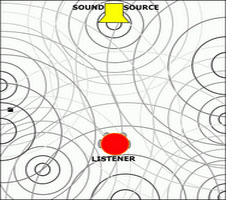Since my recent post on timing delays to the pulse of the track, I received a number of requests about how to do the same with reverbs.
Why would you want to time the verb to the track?
Because it adds depth without sticking out and makes the mix seem more polished.
Here’s what to do to time the decay:
Trigger the reverb by adding it to the snare and adjusting the decay parameter so that the decay just dies by the next snare hit. The idea is to make the decay “breathe” with the track.
You can use this decay time for the other reverbs, but you’ll probably have to adjust them slightly because the decay response of every reverb or reverb setting (like hall, plate, chamber, room) is a little different.
Here’s what to do to time the predelay:
Predelay is the slight delaying of the reverb entrance after the source signal. The reason to use it is so that the source signal doesn’t sound washed out in ambience since you hear it’s attack, then the reverb, so there’s more definition as a result.
The same way that you determined the delay time for the track (check this post out for that) will give you the timing for the predelay. The difference is that you usually need a smaller increment than you might’ve used for a delay, and it’s usually under 100 milliseconds (normally way under).
For instance, if you determined that a suitable 1/16th note delay time is 150 milliseconds, cut it in half (75 ms), then cut it in half again (37.5 ms), and maybe even in half again (19 ms, rounding it off). That’s probably going to be the best timing, but don’t be afraid to try longer or shorter variations.
Usually predelay in the 20 to 40 ms range works best. If in doubt or you don’t won’t to time it, just start with 20 ms as a good compromise.
Of these two parameters, the predelay is probably the most important in that the reverb seems more a part of the track when it’s timed. If you really want the reverb to stick out a bit, just randomly select a predelay time.
That’s how it’s done. If you want more info on using effects, check out The Mixing Engineer’s Handbook, or The Audio Mixing Bootcamp book or video course from Lynda.com.
Bobby Owsinski is an author, producer, music industry veteran and technical consultant who has written numerous books covering all aspects of audio recording. For more information be sure to check out his website and blog.





















